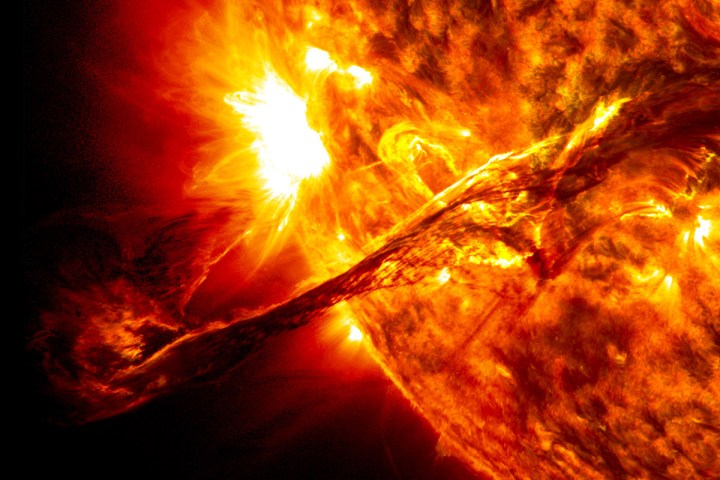
The details of another close call with calamity, which occurred during a solar event almost 50 years ago, are just now emerging thanks to stories from retired U.S. Air Force officers and through a study published yesterday in the journal Space Weather.
It was May 18, 1967 and the U.S. military was about a decade into operations to monitor space weather and solar activity. One such program included the Air Weather Service (AWS) division of the U.S. Air Force, created in the 1960s to monitor strong eruptions of radiation from the Sun’s atmosphere — solar flares — that can create a geomagnetic storm powerful enough to knock out radio communications on Earth.
I specifically recall responding with excitement, ‘Yes, half the sun has blown away!’
On that Thursday in May, sunspots with relatively strong magnetic fields began to emerge from the Sun. Five days later, observers at AWS and elsewhere predicted the Earth would be hit by a massive geomagnetic storm within the next couple days.
Although the solar event was posted on a bulletin by NORAD’s Solar Forecast Center on May 23, military officials grew suspicious when their surveillance radars became jammed. The Air Force suspected the Soviet Union was the culprit, and they ordered aircraft to prepare for war.
But prior to issuing any order to launch a counterattack, the NORAD Command Post checked in with Colonel Arnold L. Snyder of the Solar Forecast Center and asked if there was any related solar activity that might have caused the interference. “I specifically recall responding with excitement, ‘Yes, half the sun has blown away,’ and then related the event details in a calmer, more quantitative way,” Snyder said in a press release.

This information made its way up to top governmental officials, possibly even including even President Johnson, according to lead author and space physicist at the University of Colorado, Delores Knipp.
The storm raged for the next week, disrupting radio communications in many ways, and proving to be so strong that the Northern Lights could be seen as far south as New Mexico. Surely, an unnerving event during such tense times.
Knipp and her colleagues think Snyder’s response and the observations of the Solar Forecasting Center helped the Air Force determine the true cause of the radio disturbance, potentially preventing a military response and use of nuclear weapons in what could have been a dramatic beginning to World War III.
And although the event occurred almost 50 years ago, Knipp tells Digital Trends there are three important things for us to learn from it. For one, it’s important to invest in technologies that can monitor technology-disrupting phenomena. “[And] there are phenomena in space that challenge our technology systems,” she says, “and we need to advance [our] understanding of these.”
Lastly, Knipp encourages the training of qualified people to use such technologies, monitor the phenomena, and deliver the data. “Having trained personnel and staff who can communicate observations, understanding, and uncertainty goes a long way toward mitigating some of the challenges posed by solar and geospace storms,” she says.
Knipp presents her report today at the High Altitude Observatory at the National Center for Atmospheric Research in Boulder, Colorado.


